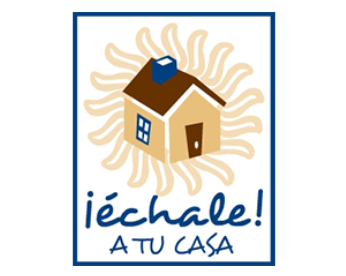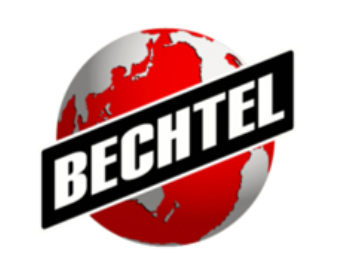Targets
11.1) By 2030, ensure access for all to adequate, safe and affordable housing and basic services, and upgrade slums
Mahindra
Mahindra Rural Housing Finance teamed up with Business Call to Action in 2012 to help provide home loans to under-served rural and semi-urban consumers in India. Mahindra has designed home loans specifically for rural customers. Interest rates are fixed rather than variable, which makes them easy to understand, and loans are coupled with life and property insurance. Moreover, Mahindra provides customers advice on how to approach the local government to acquire documentation and even accompanies customers in order to guide them through the process. Mahindra is also committed to hiring and training personnel from rural areas of India, creating job opportunities. In 2014-2015, Mahindra served more than 81,000 new customers, 75 percent of co-applicants being women. And since 2007, Mahindra has provided over 250,000 home loans in rural India. As of March 2014, it had also created more than 3,000 jobs. Mahindra estimates that its loans have benefited more than 1 million people. These loans have allowed 25 percent of clients to provide proper sanitation facilities in their homes, improving the health and wellbeing of their families. Women are particularly empowered by their inclusion as co-applicants for loans. Mahindra will continue to expand operations in the current States where it operates while also looking at expanding operations to new States depending on their potential for rural housing finance.
¡Échale! a tu Casa
In January 2012, the housing social enterprise ¡Échale! a tu Casa joined the Business Call to Action with a commitment to provide US$3 million in microfinance lending in order to help 25,000 families with minimum wage of under US$5 per day to finance the construction of their houses by 2017. With the success of its inclusive model, the company is now expanding to six new regions in Mexico and pledging to provide 12,510 new low-income clients with access to financing and sustainable housing solutions by 2022. In the process, ¡Échale! aims to employ 10,000 temporary workers from local communities in new home construction.
Through an assisted self-building program, communities are trained with the appropriate technical capacities to build their own homes. By harnessing innovations in construction technology and finance, the company has streamlined the self-build process: 30,000 houses have already been built and more than 150,000 home improvements made in Mexico alone. The technology has also been exported to Belize, Egypt, Haiti, Nicaragua and the United Arab Emirates. Houses built through ¡Échale! are also environmentally sustainable as they are constructed of earth blocks and all are equipped to harvest rainwater, reducing the use of municipal water by 20 per cent. Additionally, there are significant social impacts in participating communities, including creation of five temporary jobs for each house that is built. ¡Échale! estimates that 200,000 people have gained temporary employment for the duration of the construction process.
Dow
In 2017, Dow celebrated its 35th year partnering with Habitat for Humanity International, becoming Habitat’s first national corporate partner in 1983 and expanding support internationally in 1993. Dow’s commitment to Habitat includes financial, product and volunteer contributions. That year in 2017, Dow supported 42 Habitat projects in 19 countries, committing more than $1.4 million and engaging more than 2,000 employee volunteers in building homes alongside future homeowners.
11.2) By 2030, provide access to safe, affordable, accessible and sustainable transport systems for all, improving road safety, notably by expanding public transport, with special attention to the needs of those in vulnerable situations, women, children, persons with disabilities and older persons
Citi
As the world's leading cities rapidly grow, they face increasing strains. Through an initiative called “Citi for Cities,” Citi partners with governments, businesses and communities to identify and implement innovative solutions that help cities thrive during this period of unprecedented urban transformation. For example, the state of transportation and mobility within the City of Panama has historically been characterized as inefficient and marked by congestion, road insecurity, and inadequate infrastructure. As a solution to this long-standing issue, the Government of Panama prioritized the construction of a mass transit system for the City of Panama. Citi helped to raise $862 million to help finance the Panama Metro, Central America’s first urban rail system. In addition, Citi worked with the local government to enhance its existing social programs to ensure that any economic displacement of local businesses was mitigated and managed in line with international standards. The Panama Metro has already reduced some workers’ commute times from two hours to a little more than 20 minutes and it transports 30,000 commuters per hour—a figure expected to rise by a third over the next two decades.
Pirelli
Since 2013 Pirelli has participated in the Sustainable Mobility Project 2.0 of the World Business Council for Sustainable Development, contributing, together with other international companies from different sectors (from automotive to oil & gas and ICT), to providing sustainable mobility solutions that foster universally accessible, low environmental impact urban mobility. This commitment is also supported by Cyber Fleet™ technology, which the Company first presented in 2012. This system automatically measures tire pressure and temperature, making it possible to reduce fuel consumption by simultaneously maximizing efficiency in tire maintenance. These features offer significant advantages in terms of reduction in CO2 emissions.
11.3) By 2030 enhance inclusive and sustainable urbanization and capacities for participatory, integrated and sustainable human settlement planning and management in all countries
Bechtel
Transforming the kingdom (2015): Bechtel is helping Saudi Arabia advance its ambitious infrastructure initiative, which promotes local private sector development, new sustainable cities and communities, and protected habitats. Together with the Saudi government, we are developing four of six new economic cities—King Abdullah Economic City, Knowledge Economic City, Jazan Economic City, and Prince Adbulaziz Bin Mousaed Economic City. Core to the cities’ planning and design is economic, social, and environmental sustainability. Bechtel is using imaging technologies to generate conceptual visualizations of the projects prior to development and capturing critical information to plan, design, and construct for sustainability. These include using recycled water for irrigation, adopting solar power for heating and cooling, and applying urban sensors to optimize energy efficiency.
11.4) Strengthen efforts to protect and safeguard the world’s cultural and natural heritage
11.5) By 2030 significantly reduce the number of deaths and the number of affected people and substantially decrease the economic losses relative to GDP caused by disasters, including water-related disasters, with the focus on protecting the poor and people in vulnerable situations
11.6) By 2030, reduce the adverse per capita environmental impact of cities, including by paying special attention to air quality, municipal and other waste management
Neighbourly
Goal 11’s ambition is to ensure cities are inclusive, safe, resilient, and sustainable for future generations. In most cities, businesses already have some involvement at an infrastructure level. But in every case there’s more to give.
Neighbourly is a multi award-winning community investment and engagement platform, connecting businesses with thousands of local vetted good causes. Connecting businesses with local communities addresses many of the Goal 11 targets whilst making a positive and measurable impact in our neighbourhoods.
Companies including M&S, Starbucks, Lidl, Heineken, Aldi, B&Q, Danone, Cadent and Innocent use Neighbourly to donate volunteer time, funds and surplus food & products to causes across the UK and Ireland. For example, since launching its first surplus distribution programme in 2016, the Neighbourly platform has reduced CO2 output by 106 Kt through the redistribution of over 67M meals worth of surplus food and 870 tonnes of surplus products to those in need.
Novozymes
Novozymes offers solutions for municipal solid waste management and wastewater treatment with wide-ranging applications for cities.
In the United Kingdom, Novozymes is partnering with DONG Energy to deliver enzymes for its REnescience plant at Northwich in the North West of England. Today, a large part of UK waste ends up in landfill sites, which is expensive and harmful to the environment.
The plant in will ensure that as much of the waste as possible from almost 110,000 UK homes is recycled and converted into biogas, which can be converted into green power and used to generate around 5 MW of electricity which is enough to power around 9,500 typical households. The remaining parts of the waste include plastic and metal, which can be recycled, and an additional part that is converted into fuel.
11.7) By 2030, provide universal access to safe, inclusive and accessible, green and public spaces, in particular for women and children, older persons and persons with disabilities
Means of Implementation
11.A) Support positive economic, social and environmental links between urban, peri-urban and rural areas by strengthening national and regional development planning
11.B) By 2020, substantially increase the number of cities and human settlements adopting and implementing integrated policies and plans towards inclusion, resource efficiency, mitigation and adaptation to climate change, resilience to disasters, develop and implement in line with the Sendai Framework for Disaster Risk Reduction 2015-2030, holistic disaster risk management at all levels
11.C) Support least developed countries, including through financial and technical assistance, for sustainable and resilient buildings utilizing local materials









